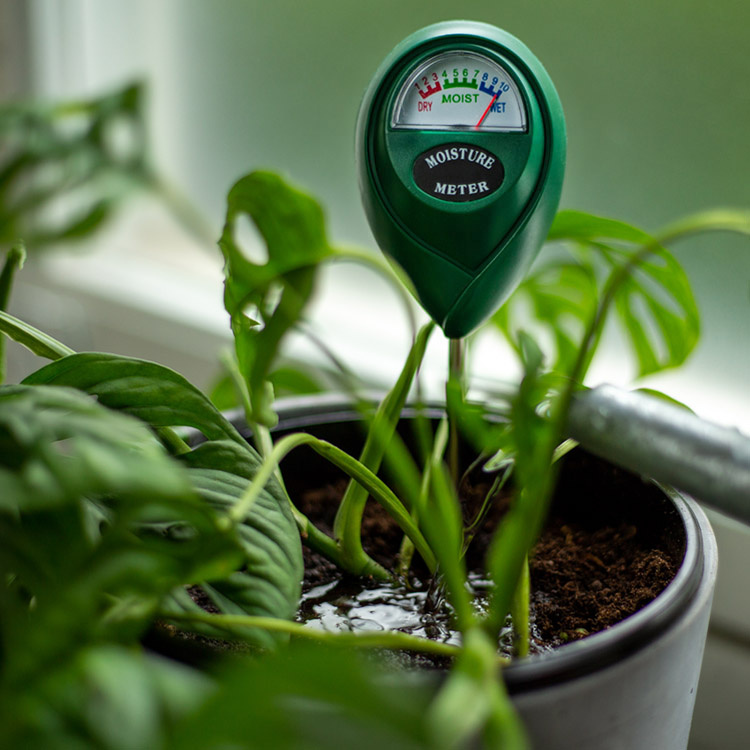Look Into the Globe of Moisture Meters: Every Little Thing You Required to Know
In the realm of dampness meters exists a world of accuracy and usefulness that frequently goes undetected. Comprehending exactly how moisture meters run, the various kinds available, and their varied uses can lose light on their value in guaranteeing quality and performance.
How Moisture Meters Work
Moisture meters operate by gauging the electric conductivity or capacitance of products to determine the dampness content existing. These meters are very useful devices throughout various markets, including agriculture, woodworking, and building and construction. By utilizing different techniques such as pinless or pin-type modern technology, wetness meters give accurate analyses that help experts make informed decisions.
Pin-type wetness meters work by putting the sharp pins right into the product being checked. The electric conductivity between the pins is then determined, with higher wetness levels bring about boosted conductivity. Moisture Meter. On the various other hand, pinless dampness meters utilize electro-magnetic signals to check a bigger location without triggering any kind of damages to the product's surface area. These meters are optimal for promptly assessing moisture degrees in big areas or ended up items.
Regardless of the technique made use of, wetness meters play a critical function in protecting against issues such as mold development, architectural damages, or product defects brought on by excess dampness. Recognizing just how these meters work is necessary for making certain the high quality and honesty of materials in different applications.
Types of Moisture Meters
Offered the important duty moisture meters play in numerous sectors, it is vital to understand the different types readily available to experts for properly evaluating moisture degrees - Moisture Meter. There are largely two primary kinds of wetness meters: pinless and pin-type wetness meters

On the various other hand, pinless dampness meters utilize electro-magnetic sensor plates to scan a bigger area of the product without causing any kind of damages. This type appropriates for swiftly scanning large areas and is frequently used for floor covering, wall surfaces, and ceilings. Pinless meters are hassle-free for taking readings on completed surfaces without leaving any type of noticeable marks.
Both kinds of moisture meters have their advantages and are picked based upon the certain demands of the job available. Understanding the differences in between these types is important for professionals to make try these out exact wetness assessments.
Applications Across Industries
Construction professionals rely on wetness meters to evaluate the dampness levels in structure products like wood, drywall, and concrete, which is crucial for preserving structural integrity and preventing concerns like rot or mold. The flooring sector uses dampness meters to determine the wetness web content in subfloors before mounting numerous floor coverings, protecting against costly problems due to excess dampness. In the food market, moisture meters are used to keep track of and control moisture levels in items such as grains, nuts, and dried out fruits to maintain freshness and visit this site quality.
Tips for Utilizing Wetness Meters
When gauging the wetness web content in different materials,Make use of the wetness meter's calibration settings to make sure accurate analyses. Calibration is vital for the correct functioning of a wetness meter. Prior to each use, it is advisable to examine and readjust the calibration setups according to the specific product being tested. Additionally, make certain the meter is set to the proper wetness range for the material you are determining to obtain one of the most specific outcomes.
When utilizing a pin-type dampness meter, put the pins to the appropriate depth recommended for the material being checked. This makes certain that the wetness readings are taken from the proper deepness within the material, providing an extra exact depiction of its dampness material. For pinless moisture meters, bear in mind to keep appropriate contact with the product's surface to get reliable analyses.
Consistently inspect and change the batteries in your wetness meter to prevent unreliable readings because of low power. Shop the meter in a safe and completely dry place when not in usage to prolong its life-span and maintain its accuracy. try this out By adhering to these tips, you can maximize the performance of your dampness meter and obtain accurate dampness content measurements throughout various materials.
Maintenance and Calibration
To make sure the accuracy of dampness material dimensions, routine upkeep and calibration of the wetness meter are necessary actions in its appropriate functioning. Calibration changes the dampness meter to make sure that it supplies constant and reputable results.
Calibration needs to be carried out periodically, particularly if the moisture meter is utilized frequently or in essential applications where exact measurements are called for. By adjusting the moisture and keeping meter routinely, customers can trust the precision of the wetness web content dimensions acquired.
Verdict

To conclude, moisture meters play a vital role in various markets by accurately gauging the moisture content of materials. Recognizing just how these devices work, the different kinds readily available, and correct maintenance and calibration are important for acquiring trusted results. Whether in manufacturing, agriculture, or construction, using moisture meters helps guarantee quality control and effectiveness in processes.

In final thought, moisture meters play an essential role in numerous sectors by precisely gauging the moisture web content of products.